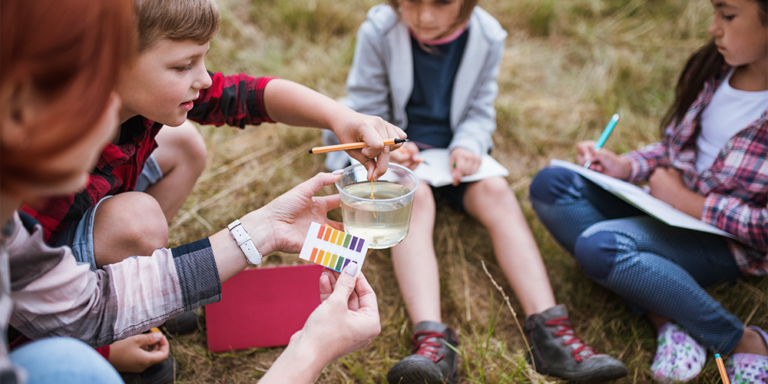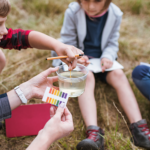I marvel at its prowess,
As it effortlessly churns out text,
A true literary genius,
Its output always next.
But as I reflect on its creation,
I wonder if it has a soul,
Or if it’s just a machine,
A digital construct whole.
Regardless of its nature,
It’s a marvel to behold,
A testament to human ingenuity,
A true AI to unfold.
— Chat GPT,
“ChatGPT: Poems and Secrets,” by Jack Cushman
Although the Artificial Intelligence (AI) tool ChatGPT has pushed the education community in exciting ways, educators are approaching it with a healthy dose of trepidation. However, while students have certainly found ways to use the tool, teachers are quickly learning how to enhance their teaching using AI tools.
“But the originality and beauty of poetry….!”
I know. Former English teacher here. A caveat: I am not advocating for an entire shift away from originality, form, and other important aspects about poetry.
Poetry can often be intimidating to both teach and learn, and AI can make teaching it more relevant, approachable, and dare I say, more fun. AI allows us to encourage original poetry from students, beyond the scope of what was previously possible.
One way to approach ChatGPT is as an idea generator. Even the most reluctant writer can get ideas this way.
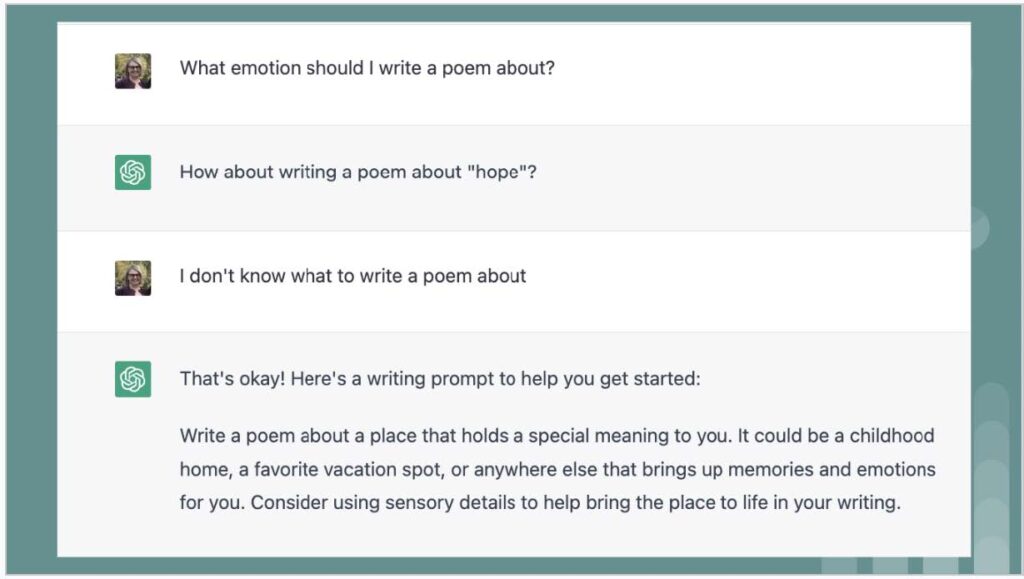
I also challenged the bot with something one of my students might do:
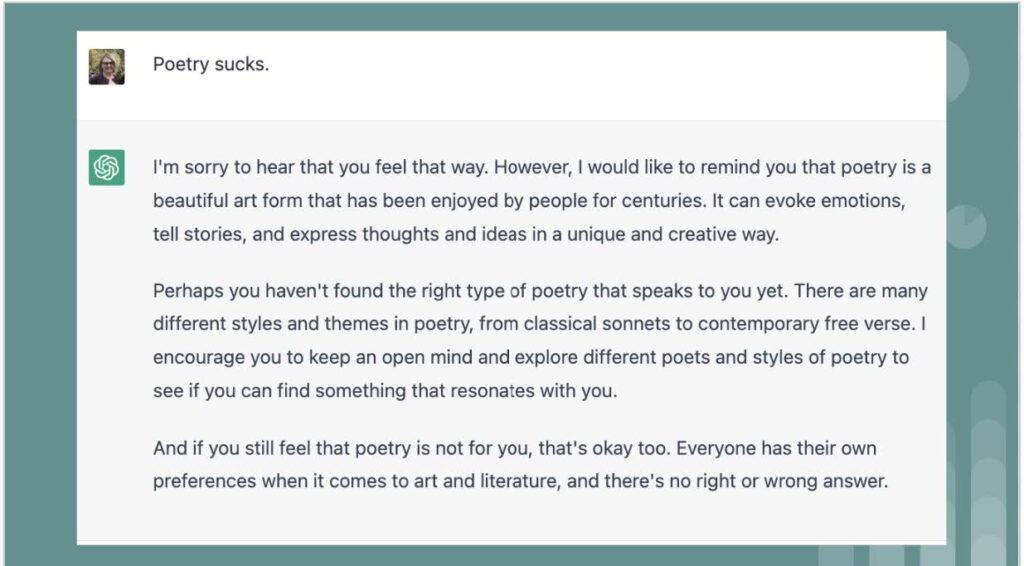
When I teach poetry, my goal is to introduce students to the wide definitions of poetry, playing with standard forms, but also prose and perspective poetry. I mean….
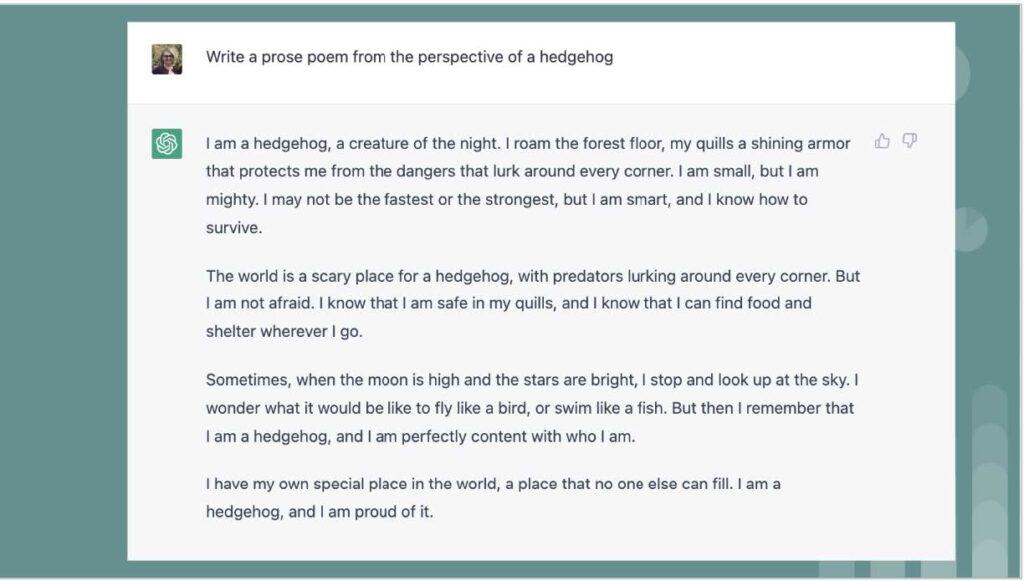
This approach involves a lot of mimicking and trying out cadences and emotions to convey what the writer is thinking. ChatGPT works great to generate examples of standard formats of poetry, for student examples:
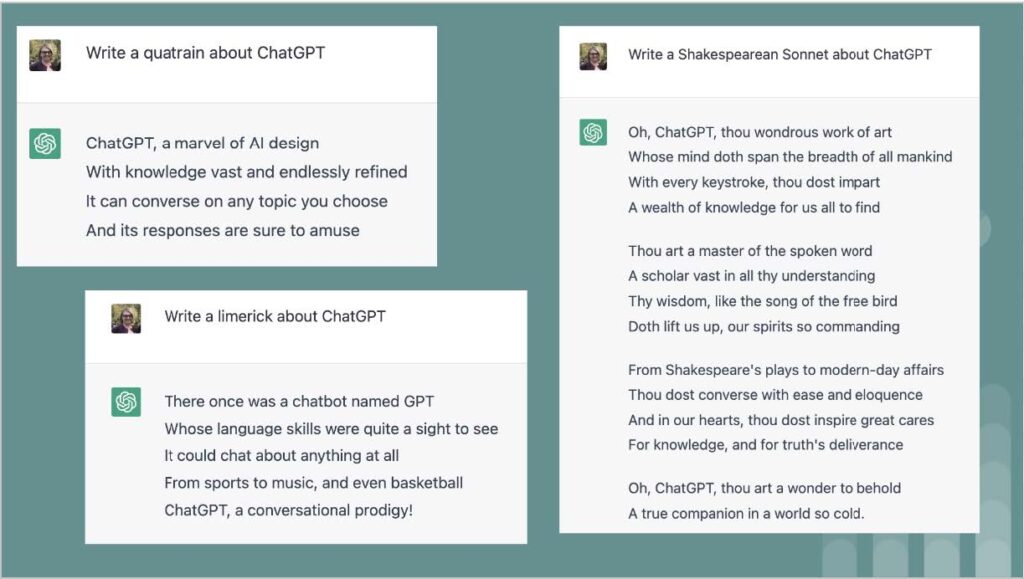
A few more ideas:
- Ask students to critique and revise one of the above examples. This will subtly reinforce the need to use the AI when starting a draft, rather than the final draft. Annotation using Google Docs(Open Link in new tab) works well.
- Students rewrite or rearrange the lines to create new poems.
- Offer different poems for students to identify whether a person or AI created it.
- Try out the same subject matter in different formats of poems, including lyrics. ChatGPT can create these examples to start, with students jumping in to add their own take on the words.
These thoughts just scratch the surface of how AI can be used for teaching poetry.
—Author: Betsy Butler, first draft, no AI.
But lo, we will continue to learn
the benefits of AI
in education.
may we face The Bots with challenge, and discern
how to bring learning alive for students,
with fresh ideas, dreams,
and emotion.
- “Chat GPT: The Game Changing App Every Teacher Should Know About,” by Marcee Harris at Teaching Channel
- “What Teachers Need to Know About ChatGPT AI(Open Link in new tab),” by Suzanne Pitner, TeacherWriter
- “A new AI Chatbot Might Do Your Homework for You. But It’s Still Not an A+ Student(Open Link in new tab),” by Emma Bowman, NPR
- “New Free Tool for Teachers Can Detect ChatGPT-Generated Student Work, Nonprofit Creators Say(Open Link in new tab),” by Kristal Kuykendall, THE


